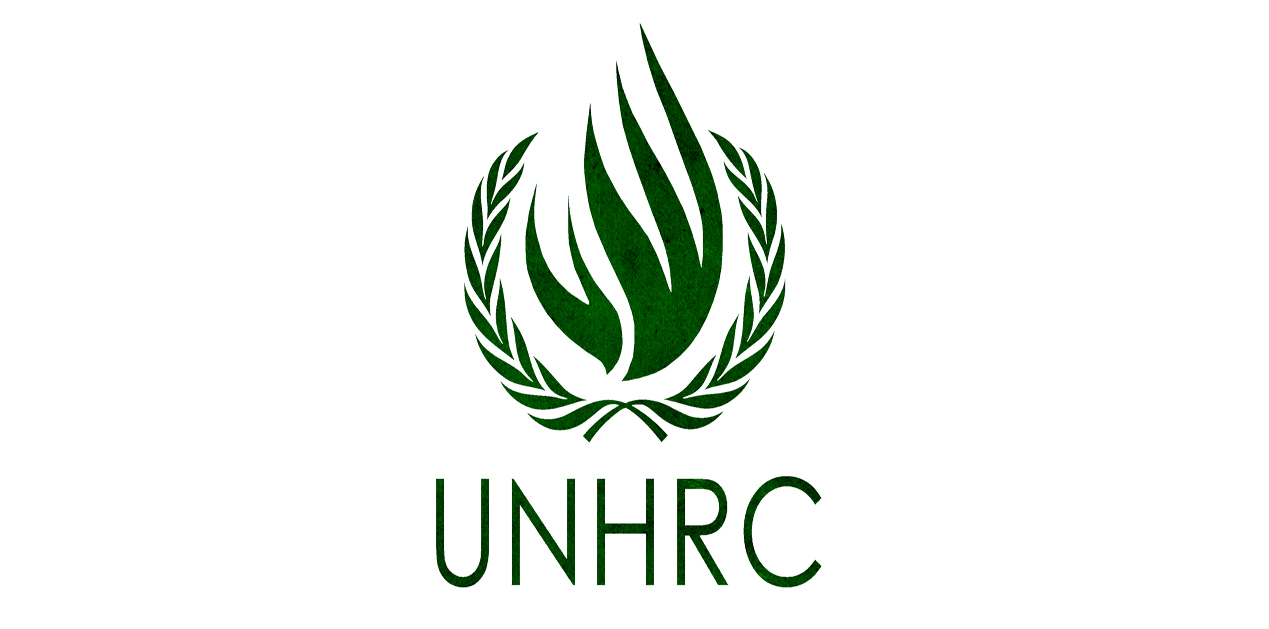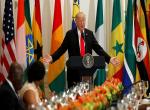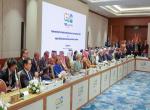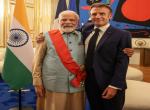The United Nations High Commissioner for Human Rights (HCHR) Report (hereafter called ‘the Report’) on ‘The Situation of Human Rights in Kashmir’ attempts to project itself as an even-handed Report.1 The bulk of the Report (140 paragraphs) is devoted to the situation in Jammu and Kashmir, with a short portion (23 paragraphs) looking at the situation in Pakistan occupied Kashmir (PoK), which includes Gilgit-Baltistan.
Background
The Report is a personal initiative of the Jordanian diplomat Zeid Ra’ad al-Hussein,2 the HCHR. The HCHR has sensationalised the uniqueness of the Report, which he calls “the first ever issued by the UN”. 3 The main significance of the Report appears to be its timing, rather than its substance.
The HCHR has asserted his mandate in publishing the Report by referring to UN General Assembly Resolution 48/141.4 This Resolution was adopted by the UN General Assembly (UNGA) in 1993.5 The Resolution created the HCHR’s post. The post is under the UN Secretary-General. Accountability for the HCHR’s actions rests therefore solely on the UN Secretary-General.
The Report was referred to in the UN daily press briefing on 14 June 2018 by Farhan Haq,6 a UN official of Pakistani origin, employed as Deputy Spokesman for UN Secretary-General Antonio Guterres. (It is relevant to note that Farhan Haq’s father was former Pakistan Finance Minister Mahbub-ul Haq, who had been born in Jammu before the partition of India7). Farhan Haq highlighted that the HCHR has asked the UN Human Rights Commission (HRC) to “consider establishing a commission of inquiry to conduct a comprehensive independent international investigation into allegations of human rights violations in Kashmir”.8
The HCHR’s mandate as set out in the 1993 UNGA Resolution is to conduct his work while respecting “the sovereignty, territorial integrity and domestic jurisdiction of member states”.9 In the case of this report, which was written without the agreement of India,10 the Report clearly violates this specific stipulation of his mandate.
There are two issues which are relevant here. The first is the nature and timing of the Report. The Report is a publication of the United Nations Secretariat, a body of officials appointed by the UN Secretary General who are not accountable to the member-states of the UNGA. There is an intriguing reference in the Report to the “timeframe available for producing this Report” 11, which is not elaborated upon. Among the conjectures arising from this reference is the imminent departure of the current HCHR from his post.12 There is another, more significant, time constraint. The recommendations of the Report appear to be linked to the next session of the UN Human Rights Council (HRC), which is scheduled to take place between 18 June and 6 July 2018 in Geneva. The Report therefore provides the UN Secretariat a means to convey its views to the HRC. In the case of India, this is unusual, since the HRC has heard the views of UN officials on the human rights situation in India as recently as in May 2017.
The second issue is that the 1993 mandate of the HCHR has been overtaken to a large measure by the UNGA Resolution of 2006, which established the empowered HRC, consisting of 47 elected UN member states.13 The mandate of the HRC given by the UNGA is to “address situations of violations of human rights, including gross and systematic violations, and make recommendations thereon.”14 At play here is the primacy of the member-driven mandate of the HRC, often framed after an open debate among HRC members, against the individual mandate of a UN official appointed by the UN Secretary General, who is not accountable for his actions. The Report’s mandate is important, because it has been issued outside the HRC framework. The HRC has institutionalised reporting on human rights situations in all member states of the UNGA since 2006. The institution established by the HRC to do this is the Universal Periodic Review mechanism or UPR. As the Report itself states, India has undergone three such UPRs so far, in 2008, 2012 and 2017.15
The bulk of the issues regarding the human rights situation in Jammu and Kashmir in the Report have been raised during the UPR of India in May 2017. 16 The HRC review of the UPR of India was adopted in September 2017.17 There is no public record of any criticism by the HCHR of the review adopted by the HRC, including on concerns expressed in his Report regarding the human rights situation in Jammu and Kashmir from 2016 onwards.
The Report
Remote Monitoring
The impression that the Report has been drafted with other objectives in mind is substantiated by the unusual method of ‘remote monitoring’ used to write this Report.18 This method requires rigorous cross-verification, which seems to have been sacrificed to constraints of time imposed by the author of the Report.19 There is no reference to any verification of facts in the Report through the large UN presence in India, although the UN is expected to follow a ‘one-UN’ approach. The outcome is a predictable imbalance. A good example of this is the use by the Report of data culled from the now defunct UN Human Rights Committee in 1997 in order to substantiate its concerns on ‘arbitrary arrests’ in Jammu and Kashmir in 2018. 20
Freedom Fighters or Terrorists?
The Report begins with a dramatic reference to the public demonstrations in the valley of Jammu and Kashmir following the death of a leader of the Hizbul Mujaheedin (HM) in 2016. The reference in the Report to the HM as an “armed group” is problematic, given that HM is a designated terrorist group not only in India, but also in the United States21 and the European Union22. The ambivalence of the Report towards terrorist groups is illustrated in its subsequent references to UN-designated terrorist organisations as “armed groups”, including Lashkar-e-Tayyiba23 and Jaish-e-Mohammed.24 Ironically, the cross-reference in the Report to these “armed groups” is made by locating them in the terrorism sanctions lists of the UN Security Council! 25 There is an obvious disconnect in the Report between the work being done in the UN to counter terrorism, and the soft approach taken by the Report to downplay terrorism.
As a senior official of the UN Secretariat, and a former envoy of Jordan to the UN, the HCHR must be aware of the obligation of member-states of the UN to adhere to the UN Security Council’s norm of ‘zero tolerance’ for terrorism. It is in this context that the Report’s expectation, that member-states like India will not use their counter-terrorism laws and provisions robustly in the fight against externally sponsored terrorism in Jammu and Kashmir, appears misplaced.
Countering Terrorism through Rule of Law
The Report is critical of the India’s legal framework used to counter terrorism, including violence incited by terrorism in Jammu and Kashmir. The framework includes laws like the Armed Forces Special Powers Act or AFSPA, and the military justice framework. The Report glosses over the fact that its concerns regarding the way such laws are applied have already been recognised by India’s own National Human Rights Commission. The Report itself refers to India’s commitment to “making AFSPA more operationally effective and humane”. This undercuts the Report’s attack on the AFSPA.26
The Report’s views on the wider framework of military justice in India is controversial. It highlights the view of a UN official27 that “military courts do not meet international fair trial standards and thus are not suitable to try offences committed against civilians”. Such an approach by the HCHR ignores the background to the introduction of India’s military justice system in 1950, including military courts. This infrastructure is closely connected with the international initiative (of which India was a party) after the Second World War that established the Nuremberg and Tokyo War Crimes Tribunals.28 (In any case, in India, civilians are not tried by military courts. These courts deal with offenses committed only by military personnel, and even then heinous crimes are still to be tried by courts - Ed)
A third thrust of the Report is critical of the tactics, including the use of force, by the Indian security forces in Jammu and Kashmir while confronting security threats. The Report deliberately glosses over the fact that the bulk of Indian security forces used to counter security threats, including threats to law and order, are drawn from Jammu and Kashmir itself, including 83,000 members of the Jammu and Kashmir police.29 Their actions are raised and debated in the state assembly of Jammu and Kashmir in keeping with the democratic political structure in place, as noted in the references used in the Report.30
The Indian army is quoted as saying they would “only resort to firing in case of high provocation or danger to their lives”.31 The HCHR, whose distinguished career includes a deep knowledge of UN peace-keeping and policy, must have noted that the use of force in self-defence or defence of the mandate is actually an integral part of the UN’s own peace-keeping policy. In fact, innovations within the UN peace-keeping system now authorise troops to use “all necessary means” to deter attempts by force to disrupt the political process, or to protect civilians under imminent threat of physical attack, and/or assist the national authorities in maintaining law and order.32 Human rights concerns regarding excessive use of force in defiance of standard operating procedures have been taken cognisance of by the political executive as well as India’s legal system, as mentioned in the HCHR’s Report. 33
Sovereignty of India in Jammu and Kashmir
That the Report has other objectives in mind becomes clear when noting that the bulk of the concerns expressed in the Report on the human rights situation in Jammu and Kashmir have already been raised and taken forward in the HRC through the UPR of India in May 2017. The key to the Report perhaps lies in its section on the political background to the “Kashmir issue”, which insidiously seeks to de-legitimise India’s sovereignty in Jammu and Kashmir (paragraphs 32-41). The narrative chosen by the Report ignores critical facts which are available to any serious researcher today. For example, contrary to assertions in the Report that “invading Pushtun forces” violated India’s territorial integrity, it was actually a Pakistan Army sponsored, equipped, led and supported invasion of Jammu and Kashmir in 1947.34
The democratic process in Jammu and Kashmir, under which regular elections have been held in a transparent manner, is sought to be undermined by the Report. Even in this attempt, the Report’s slipshod approach impacts on its credibility. This is best illustrated by the reference to “interference in local elections” in Jammu and Kashmir in 2018 as a “denial of their right to self-determination”, which is then substantiated by reference to a two-decade old BBC Report from 2002.35
The Report’s concluding section contains a call to India to “fully respect the right of self-determination of the people of Kashmir as protected under international law”.36 This ignores the fact that under the Indian Independence Act, 1947, and the Government of India Act, 1935 as amended, 37 the accession of princely states like Jammu and Kashmir to either India or Pakistan was to be decided legally by the ruler of the princely state as a sovereign decision. The “two-nation” theory which spawned the terminology of “Muslim-majority” or “Hindu-majority”, used in the Report, was not applicable to India’s princely states.
The Implications of the Report
The Report has included a short section on the alleged human rights situation in Pakistan occupied Kashmir (PoK). By doing so, it has provided an opening for Pakistan to use the Report for its own purposes, including for ‘internationalising’ the Jammu and Kashmir issue which is a staple of Pakistan’s foreign policy in recent years in the UN.
It is relevant to note that when India’s human rights situation was reviewed by the HRC in May 2017, Pakistan was not an elected member of the HRC, having been defeated in re-elections to the HRC in the UNGA held in October 2015. 38 However, at the UNGA elections held in October 2017, Pakistan succeeded in being elected to the HRC for a three-year term from 2018-2020. 39 Subsequently, Pakistan has secured nomination by the Asia-Pacific regional group to the select five-member ‘Working Group on Situations’ within the HRC. 40 The working group has the mandate to examine communications transferred to it within the HRC (including inputs like the Report, which is addressed to the HRC in its concluding section). The working group has the power to present a Report to the HRC and make recommendations to the HRC on the course of action to take. India, which was elected to the HRC for two consecutive terms until 201741, is not currently a member of the HRC due to the “cooling-off” period inbuilt into HRC election guidelines.
The next meeting of the HRC working group is scheduled for 9-13 July 2018, and in the absence of India in the HRC, Pakistan can be expected to use its membership of the HRC and its subsidiary working group to exploit the Report for its own ends. This will be in keeping with Pakistan’s repeated attempts to ‘internationalise’ the Jammu and Kashmir issue at UN forums.
India would therefore need to rely on elected members of the HRC to ward off potential Pakistani manipulation of the HCHR’s Report. The HRC should reiterate that its Review of India’s UPR, adopted in the plenary of the HRC in September 2017, has already addressed the substantive issues on the human rights situation in India. By doing so, the HRC will assert the primacy of member-states, rather than the UN Secretariat, in determining the UN’s agenda on human rights. Such a course of action will impact on the inevitable use of the Report by the Pakistani delegation at the UN General Assembly’s High-Level Segment in New York in September-October 2018.
(The author is a former Permanent Representative of India to the United Nations, New York)
Endnotes/References:
1. United Nations High Commissioner for Human Rights Office, “Report on the situation of human rights in Kashmir”, 14 June 2018. Available at https://www.ohchr.org/EN/NewsEvents/Pages/DisplayNews.aspx?NewsID=23198&LangID=E . Accessed on 16 June 2018.
2. United Nations Secretary-General, Profile of Zeid Ra’ad al-Hussein, High Commissioner for Human Rights. Available at https://www.un.org/sg/en/content/profiles/zeid-ra%E2%80%99ad-al-hussein. Accessed on 17 June 2018.
3. United Nations Human Rights Office of the High Commissioner. “First ever UN human rights Report on Kashmir calls for international inquiry into multiple violations”, 14 June 2018, Geneva. Available at https://www.ohchr.org/EN/NewsEvents/Pages/DisplayNews.aspx?NewsID=23198&LangID=E . Accessed on 16 June 2018.
4. See note 1. Paragraph 27, page 7.
5. United Nations Document A/RES/48/141, dated 20 December 1993. Available at http://www.un.org/documents/ga/res/48/a48r141.htm, Accessed on 16 June 2018.
6. See “UN Chief’s deputy spokesperson sparks a controversy on Kashmir issue”, Ankit Kumar, India Today, 4 August 2016. Available at https://www.indiatoday.in/india/story/un-chiefs-deputy-spokesperson-sparks-controversy-on-india-kashmir-problem-333340-2016-08-04 . Accessed on 17 June 2018.
7. Encyclopedia Britannica, Mahbub ul Haq. Available at https://www.britannica.com/biography/Mahbub-ul-Haq . Accessed on 17 June 2018.
8. The United Nations. Daily Press Briefing by the Spokesperson for the Secretary General. 14 June 2018. Available at https://www.un.org/press/en/2018/db180614.doc.htm . Accessed on 16 June 2018.
9. See note 1. Paragraph 3(a).
10. See note 1. Paragraph 2, page 4.
11. See note 1. Paragraph 28, page 7.
12. United Nations Secretary General. Senior Leadership Vacancies. Available at https://www.un.org/sg/sites/www.un.org.sg/files/files/OHCHR_usg_EN.pdf .Accessed on 16 June 2018.
13. United Nations General Assembly Resolution A/RES/60/251 dated 15 March 2006. Available at https://undocs.org/en/A/RES/60/251. Accessed on 16 June 2018.
14. See footnote 5. Operational Paragraph 3.
15. See footnote 1. Paragraph 49, page 13.
16. See UN Human Rights Council, UPR Review of India, May 2017 and September 2017. Available at https://www.upr-info.org/en/review/India . Accessed on 16 June 2018.
17. See UN Human Rights Council, “Human Rights Council adopts Universal Periodic Review outcomes of United Kingdom, India and Brazil,” 21 September 2017. Available at https://www.ohchr.org/en/NewsEvents/Pages/DisplayNews.aspx?NewsID=22128&LangID=E . Accessed on 17 June 2018.
18. See note 1. Paragraph 27.
19. Ibid. Paragraph 28.
20. Ibid. Paragraphs 86 and 87.
21. U.S. Department of State. State Department Terrorist Designation of Hizbul Mujaheedin, 16 August 2017. Available at https://www.state.gov/r/pa/prs/ps/2017/08/273468.htm .
Accessed on 16 June 2018.
22. EU Council Common Position No. 2006/23/CFSP dated 20 March 2006. The Hizbul Mujaheedin (HM) is listed at No. 18 in the EU’s list of Terrorist Groups and Entities. See https://eur-lex.europa.eu/legal-content/EN/TXT/PDF/?uri=CELEX:32006E0231 .
Accessed on 16 June 2018.
23. United Nations Security Council, Narrative Summaries for Listing, Lashkar-e-Tayyiba. Available at https://www.un.org/sc/suborg/en/sanctions/1267/aq_sanctions_list/summaries/entity/lashkar-e-tayyiba . Accessed on 17 June 2018.
24. Ibid. Jaish-i-Mohammed. Available at https://www.un.org/sc/suborg/en/sanctions/1267/aq_sanctions_list/summaries/entity/jaish-i-mohammed . Accessed on 17 June 2018.
25. See note 1. Paragraph 135, footnote 300.
26. Ibid. Paragraphs 47 and 49.
27. Ibid. Paragraph 54.
28. Plans to prosecute German political and military leaders were announced in the 1942 St. James Declaration. In the declaration, the United States joined Australia, Canada, China, India, New Zealand, the Union of South Africa, the Soviet Union, and nine exiled governments of German-occupied countries to condemn Germany’s “policy of aggression.” The Declaration stated that these governments “placed among their principal war aims the punishment, through the channel of organized justice, of those guilty of or responsible for these crimes, whether they have ordered them, perpetrated them or participated in them.”
In August 1945, the four major Allied powers therefore signed the 1945 London Agreement, which established the IMT. The following additional countries subsequently “adhered” to the agreement to show their support: Australia, Belgium, Czechoslovakia, Denmark, Ethiopia, Greece, Haiti, Honduras, India, Luxembourg, the Netherlands, New Zealand, Norway, Panama, Paraguay, Poland, Uruguay, and Yugoslavia. For details see U.S. Department of State, Office of the Historian, The Nuremberg and Tokyo War Crimes Trials (1945-1948).
U.S. Department of State, Office of the Historian. Available at https://history.state.gov/milestones/1945-1952/nuremberg . Accessed on 16 June 2018.
29. See Jammu and Kashmir Police, “History and Background of J&K Police”. Available at http://www.jkpolice.gov.in/about-jammu-kashmir-police/history.htm . Accessed on 17 June 2018.
30. See note 1. Paragraphs 64, 66, 74.
31. See note 1. Paragraph 75.
32. United Nations. Department of Peacekeeping Operations. “Principles of Peacekeeping”. Available at https://peacekeeping.un.org/en/principles-of-peacekeeping . Accessed on 17 June 2018.
33. See note 1. Paragraphs 73 and 74.
34. For a comprehensive account on the historical background to the Jammu and Kashmir issue, see “War and Diplomacy in Kashmir, 1947-48” by C. Dasgupta. Published by SAGE Publications, 2002.
35. See note 1. Paragraph 40.
36. See note 1. Page 49. Sub-paragraph (q).
37. Indian Independence Act, 1947, Section 2 (3) (4). Published by Government of the United Kingdom. Available at http://www.legislation.gov.uk/ukpga/1947/30/pdfs/ukpga_19470030_en.pdf and Government of India Act, 1935 available at http://www.legislation.gov.uk/ukpga/1935/2/pdfs/ukpga_19350002_en.pdf . Accessed on 17 June 2018.
38. See “Pakistan loses United Nations human rights council election”, The Indian Express. Available at https://indianexpress.com/article/world/world-news/pakistan-loses-united-nations-human-rights-council-election/ . Accessed on 17 June 2018.
39. See “Pakistan elected as member state of UN Human Rights Council”, The Dawn. Available at https://www.dawn.com/news/1364213 . Accessed on 17 June 2018.
40. See Permanent Mission of Pakistan to the United Nations & other International Organizations, Geneva. Available at http://pakistanmission-un.org/?news=pakistan-to-serve-as-member-of-the-human-rights-council-working-group-on-situations . Accessed on 16 June 2018.
41. “India re-elected to Human Rights Council till 2017”, Indrani Bagchi, Times of India, 23 October 2014. Available at https://timesofindia.indiatimes.com/india/India-re-elected-to-UN-Human-Rights-Council-till-2017/articleshow/44913789.cms . Accessed on 16 June 2018.
Image Source: http://hylc.in/archives/hylc_2017/images/hrc.jpg











Post new comment